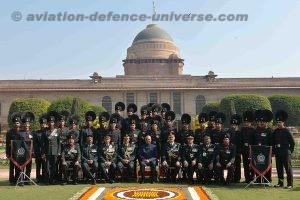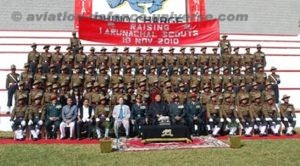New Delhi. 30 September 2020. This is the fascinating history of the lovable Thambis of Indian Army’s Corps of Engineers. Madras Engineer Group (MEG), informally known as the Madras Sappers, is an engineer group of the Corps of Engineers of the Indian Army. The Madras Sappers draw their origin from the erstwhile Madras Presidency army of the British Raj. This regiment has its HQ in Bengaluru. The Madras Sappers are the oldest of the three groups of the Corps of Engineers.
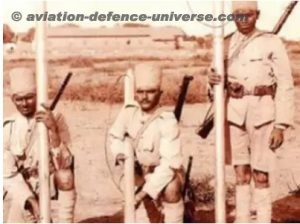
The Madras Engineer Group was raised at St Thomas Mount, Madras as two companies of Pnrs. By 1803, these were expanded to two Bns of eight coys each. In 1830, the Madras Pnrs were converted into the Corps of Madras Sappers and Miners. The Corps was re-org in 1838 and again in 1846. The HQ movement to Mercara and in 1854, it move to Dowleshwaram. The Corps finally established its HQ at Bangalore in Mar 1865. In 1876, the Corps became Queen Victoria’s Own Madras Sappers and Miners. In 1897, the Madras Sappers was designated as sr most in order of precedence, followed by Bengal and Bombay Sappers. The Great War of 1914-18 saw units of the Corps serve in Mesopotamia, France, Egypt and the NW Frontier. In 1932, the three Corps of Sprs and Miners were amalgamated into the Corps of Indian Engrs.
During the World War II, 101 units of the Gp served in various Theatres of war in Europe, Africa, the Middle East and the Far East. During this time, a peak strike of 31,000 Sappers was recorded. In Italy, Sub Subramanian of the Group was posthumously awarded the George Cross for conspicuous gallantry. He was the first Indian to win this distinction. In post World War II period, the structure was reduced due to disbandment and after Independence, especially 1960 onwards, the Group again expanded considerably.
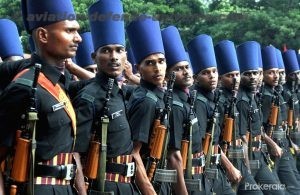
They are an engineering group of the Corps of Engineers of the Indian Army. Sappers are basically combat engineers. A combat engineer (also called field engineer, pioneer or sapper in many armies) is a soldier who performs a variety of construction and demolition tasks under combat conditions. The combat engineer’s goals involve facilitating movement and support of friendly forces while impeding those of the enemy. Madras Sappers are responsible for the design, construction and maintenance of all works, buildings, airfields, dock installations, etc., together with accessory services such as military roads, water and electricity supply, drainage, refrigeration, furniture, required by the Army, Navy, Air Force & Coast Guard in India.
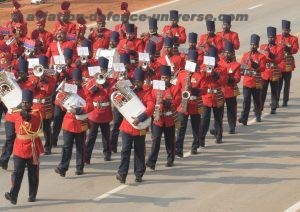
The Madras Sappers were the only regiment of the Madras Presidency Army to survive unscathed the extensive reorganisations that took place between 1862 and 1928. The thambis, as the troops of the Madras Sappers are popularly known, with their hallmark Shakos have distinguished themselves in many battlefields around the world for 230 years. It was story which started on 30 September 1780 at Madras Patnam when Madras Pioneers was created from two company of Pioneers. In 1831 it was renamed Corps of Madras Sappers and Miners and relocated its Had Quarters to Bengaluru, where it remains till today. For its bravery in 1876 it received prefix Queens’s Own, later on 1903 2nd Queen’s Own Madras Sappers and Miners and finally renamed in 1911 as 2nd Queen Victoria’s Own Madras Sappers and Miners.
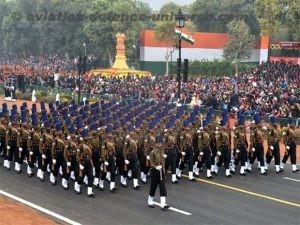
The newly raised army of the Madras Presidency was deficient of combat pioneers who were raised as ‘ad hoc’ companies and disbanded after the conflicts. The First Anglo-Mysore War highlighted this deficiency and led to the raising of two companies of the Madras Pioneers on 30 September 1780 at Fort St George. These men are the forefathers of the Madras Engineer Group of today and the Corps of Engineers of the Indian Army.
The Madras Pioneers formed an integral part of the armed forces. Their principal job in active warfare was to dig ‘saps’ or ‘trenches’ which permitted cannon to be brought in range of enemy fortifications and to dig ‘mines’ which would explode creating a breach in the fort walls. Hence the name, Sappers & Miners. In addition, the sappers used to lead the way to the breach for the ‘forlorn hope’ and infantry to follow. They also built roads, bridges, fortifications, wells, water-supply and fought as infantry when needed.
Since this group was constituted by the Madras Presidency, and formed part of the Madras Army, they were called the Madras Sappers. Likewise in 1803 and again in 1824, the Bengal Sappers and Bombay Sappers were formed in the other presidencies.
The Madras Sappers recruited and trained small tough and wiry men from South India. These engineer troops fought in numerous campaigns in India at Sholinghur, Srirangapatna, Assaye (along with Major General Arthur Wellesley, later Duke of Wellington), and also in Egypt, China, Burma and other places abroad. The Madras Sappers moved into Bengaluru in 1834, when they were involved in a major part of the construction activities of the Civilian and Military buildings in Bengaluru. Their association with Bengaluru, where the Centre is located, continues to this day.
The motto of the Madras Sappers is that common to all three regiments of the Corps of Engineers, Sarvatra (Sanskrit:Everywhere) the Indian equivalent to ‘ubique’, the motto of the Royal Engineers.
Battle honours
Pre-World War I
- Carnatic (1781–82)
- Sholinghur (1781–82)
- Mysore (1792)
- Seringapatam (1799)
- Egypt 1801
- Assaye (1803)
- Java (1811)
- Nagpur (1819)
- Mehidpur (1819)
- Ava (1825)
- China (1840)
- Meanee (1843)
- Hyderabad (1843)
- Pegu (1852)
- Persia (1856–57)
- Central India (1858)
- Lucknow (1858)
- Taku Forts (1860)
- Pekin (1860)
- Abyssinia (1868)
- Afghanistan (1878–80)
- Egypt (1882)
- Tel-el-Kebir (1882)
- Suakin (1885)
- Tofrek (1885)
- Burma (1885–87)
- Chitral (1895)
- Malakand (1897)
- Tirah (1897–98)
- Punjab Frontier (1897–98)
- Boxer Rebellion (1900)
World War I
- France & Flanders (1914–15)
- Suez Canal (1915–17)
- Egypt (1915–17)
- Gaza (1917)
- Megiddo (1917)
- Sharon (1918)
- Palestine (1918)
- Baghdad (1915–18)
- Mesopotamia (1915–18)
- Tigris (1916)
- Kut-el-Amara (1917)
- India (1917)
- Persia (1918)
- N.W. Frontier (1914–15)
- East Africa (1918)
World War II
- Mersa Matruh (1940–43)
- Ngakyedauk Pass (1942–45)
- Bishenpur (1942–45)
- Meiktila (1942–45)
- Tamu Road (1942–45)
- Cassino I (1943–45)
- Abyssinia (1940–41)
- North Africa (1940–43)
- Iraq (1941)
- Syria (1941)
- Malaya (1941–42)
- Burma (1942–45)
- Italy (1943–45)
- Post Independence
- Zoji La (1948)
- Basantar River (1971)
- Jammu & Kashmir (1947-48)
- Jammu & Kashmir (1965)
- Punjab (1965)
- Jammu & Kashmir (1971)
- Punjab (1971)
- East Pakistan (1971)
Symbols
The battle symbols of MEG are, a sphinx to commemorate the victory in Egypt in 1801, an elephant for the victory in Assaye in 1803, a dragon for China(1848), a bighorn sheep for Zoji La (1948), and a tank for Basantar (1971).
Madras Engineer Group have been actively participating in the annual Republic Day Parade of India. MEG have been awarded the Best Marching Contingent three times in 1991, 1997 and 2017.
The Madras Sappers Military Band is one of the close to 50 Indian Army regimental bands, serving as part of the Madras Engineer Group in Bangalore.[1] It was raised in 1951 with 30 bandsmen in its ranks. Lance Havildar Peter was the first bandmaster. The Madras Sappers Pipes and Drums was previously raised in 1934. It was selected as the ceremonial band for the Rashtrapati Bhavan in 1992.[2]
It has performed at arrival ceremonies at the Rashtrapati Bhavan as well as events hosted by the President of India. It participates in remembrance ceremonies in honor of those who were killed in Indo-Pakistani War of 1971 and the Bangladesh Liberation War. It has performed in various domestic parades and ceremonies such as the Delhi Republic Day parade. It has also taken part in Republic Day parades in Bangalore as well as foreign events such as the 1987 South Asian Games and 2003 Afro-Asian Games.
Madras Sappers Museum established in 1979, showcases the history of the Madras Engineer Group. The Madras Sappers are the oldest regiment of the corps of engineers of the Indian Army. The museum chronicles their history and achievements and houses armour used by the regiment, various medals, attire, and a sports gallery.






































